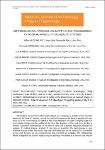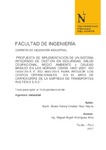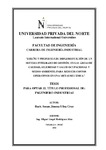Mostrar el registro sencillo del ítem
Methodological proposal on safety in the transmission of medical images in telehealth systems
| dc.contributor.author | Auccahuasi, Wilver | |
| dc.contributor.author | Sernaque, Fernando | |
| dc.contributor.author | Romero, Luis | |
| dc.contributor.author | Rurbano, Kitty | |
| dc.contributor.author | Perez, Iván | |
| dc.contributor.author | Diaz, Mónica | |
| dc.contributor.author | Cueva, Juanita | |
| dc.contributor.author | Ojeda, Pedro | |
| dc.contributor.author | Flores, Edward | |
| dc.date.accessioned | 2021-06-03T00:01:00Z | |
| dc.date.available | 2021-06-03T00:01:00Z | |
| dc.date.issued | 2020-11-30 | |
| dc.identifier.citation | Auccahuasi, W. ...[et al]. (2020). Methodological proposal on safety in the transmission of medical images in telehealth systems. PalArch’s Journal of Archaeology of Egypt / Egyptology, 17(6), 1768-1774. https://archives.palarch.nl/index.php/jae/article/view/1056 | es_PE |
| dc.identifier.issn | 1567-214X | |
| dc.identifier.uri | https://hdl.handle.net/11537/26684 | |
| dc.description.abstract | ABSTRACT Information and communication technologies are managing to modify certain essential aspects in the lives of forgives, one of the positive impacts on the lives of people and even more so in the communities, is related to the democratization of health, bringing health For most people, it improves the quality of life, thus, the objective of this work is to be able to present a practical methodology, to be able to carry out a remote diagnosis, through the analysis of medical images, whether of any type or modality, the methodology is very practical because it does not require high value infrastructure, on the contrary it is considered as low cost, because we use computational resources that are available. The methodology allows a diagnosis by a doctor specializing in radiology, who being at a distance can help the diagnosis. The methodology allows the transmission of information, essential, which corresponds to the identification of the affected areas or that are considered with alterations in the image, this process consists of defining a mask for identification, the doctor who performs the diagnosis does not require sending the original image, otherwise it only requires the sending of the marking, with this you can use simple information delivery mechanisms that do not consume much resources, this is one of its strengths of the methodology. As a result, we present a simulation of the methodology, using computerized tomography images of the Brain, where foreign objects are identified in the image, we proceeded to use the methodology, where the DICOM image was converted to PNG; then we proceeded to mark the foreign objects in the image, and finally the image was obtained with all the markings, this image is sent to the health center of origin, for registration. The methodology can be replicated, used and adapted to each of the characteristics and needs of each health center. | es_PE |
| dc.format | application/pdf | es_PE |
| dc.language.iso | eng | es_PE |
| dc.publisher | PalArch Foundation | es_PE |
| dc.rights | info:eu-repo/semantics/openAccess | es_PE |
| dc.rights | Atribución-NoComercial-CompartirIgual 3.0 Estados Unidos de América | * |
| dc.rights.uri | https://creativecommons.org/licenses/by-nc-sa/3.0/us/ | * |
| dc.source | Universidad Privada del Norte | es_PE |
| dc.source | Repositorio Institucional - UPN | es_PE |
| dc.subject | Diagnóstico por imágenes | es_PE |
| dc.subject | Diagnóstico asistido por computadora | es_PE |
| dc.subject | Tomografía computarizada | es_PE |
| dc.subject | Tecnología de información | es_PE |
| dc.subject | Salud | es_PE |
| dc.title | Methodological proposal on safety in the transmission of medical images in telehealth systems | es_PE |
| dc.type | info:eu-repo/semantics/article | es_PE |
| dc.publisher.country | NL | es_PE |
| dc.identifier.journal | PalArch’s Journal of Archaeology of Egypt / Egyptology | es_PE |
| dc.subject.ocde | https://purl.org/pe-repo/ocde/ford#2.02.04 | es_PE |







